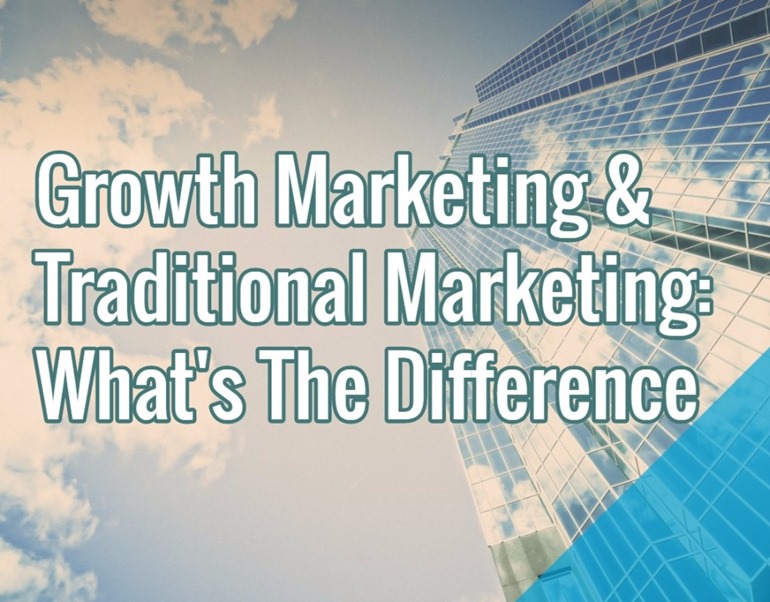Aren’t all marketers trying to achieve growth?
This is a question that often follows when topics like “growth marketing” or growth hacking” come up.
The answer is yes, but there are still some key differences in growth marketing that sets it apart from traditional methods.
Read on to learn the real distinction, and how you can implement growth marketing into your own digital marketing efforts.
Growth Marketing Is Experimental
Traditional marketers focus on building brand awareness and reputation, which not only takes time, but a huge marketing budget. Years of outbound marketing (paid advertisements) and reputation management could develop loyal customers and bring results.
Growth marketing as a tactic was born out of need — startups didn’t have the time or money to operationalize “industry best practices” to grow.
Instead, growth marketing is decidedly experimental, focusing on untested or unconventional marketing solutions that can result in massive growth.
Case In Point: Airbnb

AirBnB thought outside of the box with their decision to market on Craigslist. They knew many people were already using the platform to advertise their houses for rent, so they asked them to put their listings on AirBnB instead.
Many consider this little trick to be the driving point behind AirBnB’s massive growth. The platform went from being completely unknown a few years ago to being worth more than $10 billion today, so they must be doing something right.
Nearly all of growth marketing’s experimental tactics happen in the digital sphere, which isn’t to say traditional marketers ignore this area. Traditional marketers are adopting social media, content marketing, and other new tactics, but only after they’ve been demonstrated effective by industry research.
How You Can Do It
There are no best practices out there on how to do something experimental or outside the box, because then it wouldn’t be an experiment!
If you want to operationalize this aspect of growth marketing, you need to:
- Get creative
- Pay attention to new tools, platforms, and opportunities in the digital sphere
- Never fear failure
It Creates Demand
Maybe you’ve heard — despite working with the brightest minds and operationalizing the most innovative marketing tactics, 90% of startups still fail.
That might have you second guessing how effective growth marketing can really be, but that’s because many startup companies forget an important point — demand.
Effective growth marketers, the other 10% of startups, think of their audience before product development even begins. They create a product that people can’t live without, making growth inevitable.
And even if the product isn’t completely unique, growth marketers can create demand by making it stand out from the other products out there.
Case In Point: Pinterest

That’s what Pinterest did. They didn’t promote the platform with a sense of hype, but instead created demand through exclusivity.
In the beginning, you couldn’t just sign up for a Pinterest account. You had to request an invitation, which made the platform seem like an exclusive club that people wanted to join — driving demand. Today, the platform has 100 million monthly active users.
On the other hand, traditional marketers often develop a product first, and then develop ways to convince their audience that they need it. To see the contrast, compare Pinterest’s early marketing tactic to Google+.
Google+ was surrounded by hype and promoted relentlessly.
The result? A less than lukewarm response on launch.
Google has operationalized even more strategies to try to convince consumers that they need a Google+, like forcing people to sign up if they want to easily use YouTube, Photos and Drive.
And while Google+ use is growing, it can’t compare to the massive growth Pinterest saw by simply creating their own demand.
How You Can Do It
The best strategy you can take is to consider your audience before even developing your product. Create something, unique, useful and effectively irresistible, and demand comes organically.
Beyond that, you should adopt strategies to create demand, such as offering new customers a deal to try out your product, or creating an exclusive club, much like Pinterest did.
It’s Consumer-centric
Consumers are the core driving factor behind growth marketing. It’s all about offering value to customers, to the point where they’re more than happy to hand over their money.
Case In Point: Dropbox

A great example of a consumer-centric growth marketing strategy is Dropbox.
For every friend who installs Dropbox at your invitation, they give you both extra storage. People jump all over this opportunity, and effectively turn themselves into a product distribution channel.
How You Can Do It
Identify your audience’s unique needs and desires, and position your brand and products as a solution for it.
This is done by developing buyer personas for your target customer, identifying their pain points, and using them to develop a unique selling proposition.
Offer value, and give consumers a reason to try your product beyond basic need.
It’s Data Driven
Growth marketers are willing to travel through uncharted marketing territory, but they expect to get knowledge from the effort.
Every part of a growth marketing campaign is considered a hypothesis that must be tested. Based on the results, efforts can be adjusted or abandoned.
Case In Point: Quora

That’s how Quora became the most popular question-and-answer website, despite plenty of competition at launch. The company had a team of growth hackers charged with testing, and results drove quick changes in their technical frameworks.
One specific method they used was studying the behavior patterns of users who were on the platform the most. They used this information to optimize their user experience. Between January 2010 and 2011, the platform grew 37,000%.
Even failures at growth marketing are valuable as a learning experience. Growth marketers create new hypotheses about why their audience reacted negatively or not at all to their strategy, and use it to inform new efforts.
Traditional marketers, on the other hand, are more worried about avoiding mistakes than learning from them. They adopt strategies based on the latest industry research, but don’t pay attention to whether or not their efforts are working for their unique audience.
How You Can Do It
Set up a framework to understand what works and what doesn’t in your marketing sales funnel:
- Create measurable goals
- Use analytics software
- A/B test everything
- Monitor the effectiveness of your campaigns
- Make adjustments
- Do it all again
Hand-Picked Related Articles:
- The Difference Between Marketing And Growth Hacking
- 7 Tips For Growth Hacking Traffic Monster Headlines
- 5 Growth Hacking Traffic Ideas and Examples
* Adapted lead image: ![]() Public Domain, pixabay.com via getstencil.com
Public Domain, pixabay.com via getstencil.com
Growth Marketing & Traditional Marketing: What’s The Difference
The post Growth Marketing & Traditional Marketing: What’s The Difference appeared first on Search Engine People Blog.
(55)
Report Post







